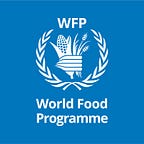Pakistan launches new Humanitarian Response Facility
When disasters strike, ensuring the World Food Programme’s staff can access and distribute life-saving food is key to launching an effective and immediate response.
“We are building the hubs around the world on a regional basis so that we can respond quickly, because quick responses mean lives saved and that is an investment in infrastructure that we must not back down on,” — David Beasley, WFP’s Executive Director.
WFP’s Pakistan Country Office has recently built and inaugurated a state-of-the-art Humanitarian Response Facility (HRF) for the Government in Gilgit Baltistan. It will store humanitarian relief stock and function as a humanitarian staging area during emergencies. This is part of the office’s work to strengthen government capacity to rapidly respond to emergencies.
This is Pakistan’s 7th HRF, and these are strategically located around the country. Pakistan is vulnerable to climate change and natural disasters, including earthquakes, landslides and floods. These can destroy roads and cut-off access to remote communities, so the HRF are built to ensure that families can access food and humanitarian support when they need it the most.
In 2010, flooding across the length of the country and affected more than 20 million people. In 2010, the Government did not have a logistics system in place that could support the delivery of pre-positioned stocks to families who lost their homes and livelihoods. A lack of a central warehouse to store humanitarian assistance was one of the biggest challenges of the response. Today, WFP is learning from past challenges to prepare for potential emergencies in the future.
Working in partnership to save lives
The HRF across Pakistan are an example of the close relationship between WFP and the Government of Pakistan and their commitment to improving families’ food security. The government is responsible for the management and staffing the facilities, and generously provided the land to build them on. WFP Engineers from the Pakistan Country Office and headquarters constructed the HRF in close collaboration with the National Disaster Management Authority and Gilgit Baltistan Disaster Management Authorities. WFP staff run training programmes for HRF employees on warehouse and facility management, humanitarian supply chain and emergency response.
“Since 2013, the Humanitarian Response Facility (HRF) network has been enabling Provincial Disaster Management Authorities prepare for and respond to emergencies, including the 2013 floods emergency in Punjab and Sindh, earthquake in Baluchistan and earthquake and floods in Chitral,” said Finbarr Curran, Representative and Country Director of WFP Pakistan.
“WFP’s newly constructed Humanitarian Response Facility will increase the emergency and disaster response capacity of both government and humanitarian responders in Pakistan,” said Hafiz-U Rehman, Chief Minister for Gilgit Baltistan. “This facility will play a pivotal role in rapid and coordinated responses to future emergencies in Gilgit and surrounding areas,” he added.
The facility was constructed with US$2.5 million of generous support from the governments of the Australia, Canada, Denmark, Italy, Japan, The Netherlands, and the United States of America (USAID), including CDN$2.2 million (US$1.7 million) from Canada alone. The total covered storage capacity of this facility is 960 metric tonnes, two 15x32meter warehouse units and an open storage space of up to 10,000 metric tonnes.
Read more about WFP’s work in Pakistan.
